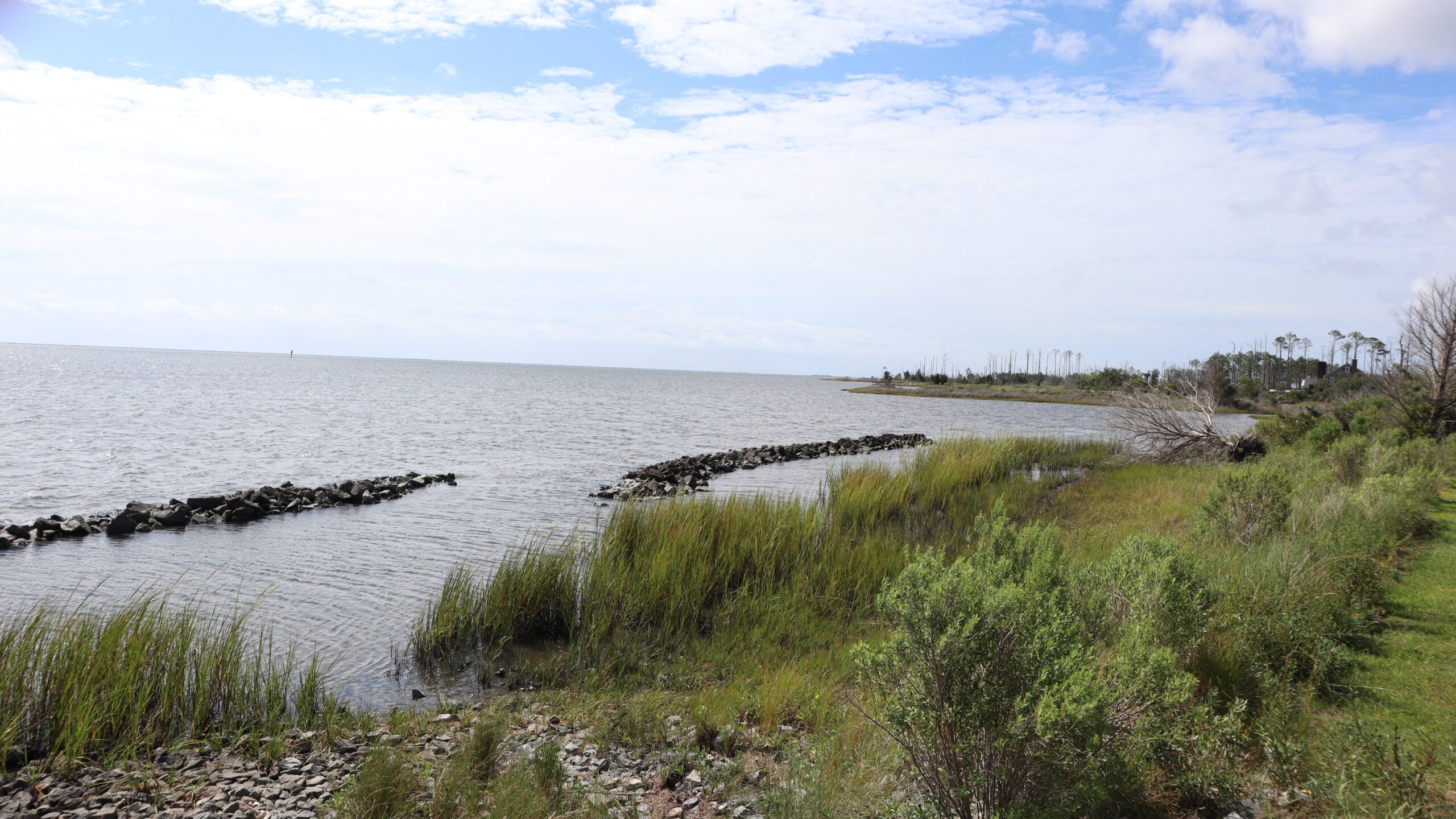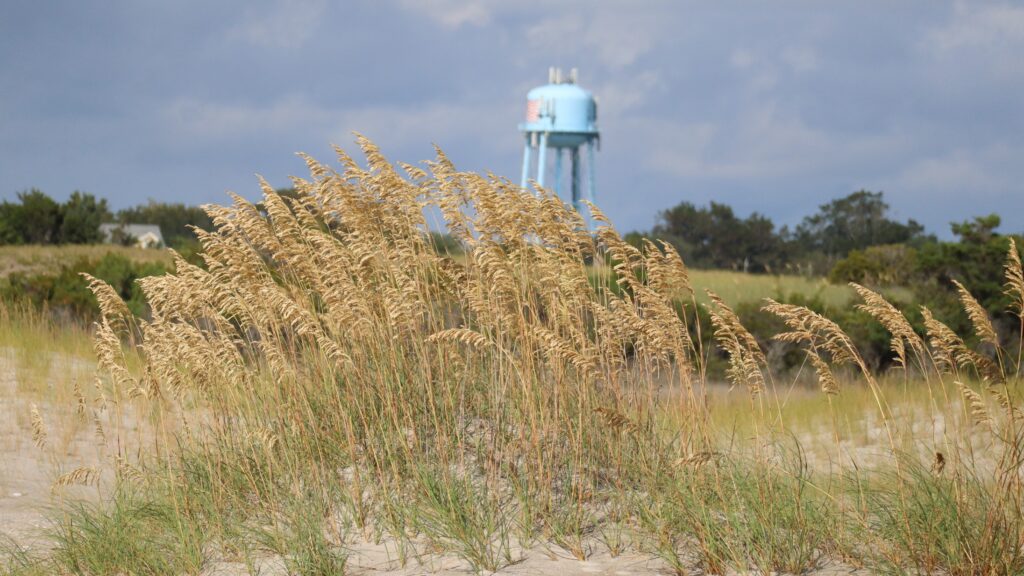Making Equitable Climate Adaptation a Priority

Brittany Salmons is an ORISE Climate Science Translation and Communications Fellow for the Southeast Climate Adaptation Science Center (SE CASC) and an alumna of the Climate Change and Society Program at NC State University. For her Capstone project, Brittany worked with the Carolinas RISA team, a SE CASC partner, out of the North Carolina State Climate Office. The following was written by Brittany Salmons.
Equitable climate adaptation is becoming an extremely important goal for many organizations and researchers. The Justice40 Initiative by the Biden Administration provides substantial investments for climate and environmental justice, making equitable adaptation a top priority. My capstone project for the Climate Change and Society program highlights how climate adaptation professionals are beginning to think about equitable climate adaptation and how to identify communities most in need of adaptation research.
I partnered with the Carolinas Collaborative on Climate, Health, and Equity (C3HE) – the Carolinas Regional Integrated Sciences and Assessments (RISA) team – to research this topic and provide insight into communities in need of adaptation research. The C3HE team has made it a priority to actively find communities for adaptation research. “We want to ensure we are not overlooking anyone. It’s important that we make a concerted effort to reach out to places that otherwise might not be in our orbit,” said Dr. Jane Harrison, Coastal Economics Specialist for North Carolina Sea Grant and C3HE member.
Throughout the 21st century, research has focused on communication, planning, implementation, and evaluation but there is a continual need to identify and assess communities that are on the forefront of climate impacts. My research focused on how climate adaptation professionals, working within university and governmental organizations, can identify community partners for adaptation research and planning. I define climate adaptation professionals as researchers, government officials, and community stakeholders who are trained to convey research, guidance, and recommendations to communities in need of adaptation research.
While working on my capstone project I investigated how frontline communities and socioeconomic vulnerability are defined, how historical legacies drive community vulnerability to climate change today, and already existing quantitative determinants of vulnerability. “Social and economic dimensions of vulnerability are just as important as the biophysical hazard risk. Not all places have the same capacity to weather these storms,” added Dr. Harrison.
When it came to defining frontline communities, I found a strong emphasis on socioeconomic status, adaptive capacity, minority status, and historical legacies such as segregation and lack of investment that all compound to create high-risk communities.
It is important to prioritize these communities that have the least amount of resources for adaptation research and assistance. It seems like an easy and intuitive idea but there are communities throughout North and South Carolina that are being pushed out of their homes due to things like flooding, sea level rise, gentrification, and high repair costs.

Communities are more than just a collective of individuals living in the same geographic location. They are defined by cultural spaces, traditions, social networks, natural and economic resources, as well as physical places. These connections require that climate adaptation professionals take into account these different aspects of a community when conducting research in order to develop the most effective and just recommendations for adaptation.
My contribution to that research focused on socioeconomic vulnerability and how it can be visualized within North and South Carolina. I focused on GIS-based visualizations as a preliminary stage for identifying communities that should be further evaluated to determine if they could benefit from climate adaptation research. The main indicators I chose for this visualization include the Centers for Disease Control and Prevention Agency for Toxic Substances and Disease Registry’s (CDC/ATSDR) Social Vulnerability Index (SVI), the Federal Emergency Management Agency’s (FEMA) National Risk Index (NRI), the U.S. Census Bureau’s Community Resilience Estimates (CRE), and the Environmental Protection Agencies (EPA) Environmental Justice Screening and Mapping tool (EJScreen). I created a web application, compiling these data sources for North and South Carolina, for a more streamlined visualization.
These already existing measures of vulnerability serve many different purposes and each have important limitations. The main benefit of utilizing these tools in conjunction with one another comes from their comprehensive estimates of socioeconomic vulnerability which is an important predictor of a community’s ability to adapt to climate change.
It is important to note, however, that this visualization should be used in a preliminary way to inform further decision-making, consultations, sector-focused research, and adaptation plan implementation. According to Dr. Harrison, “Brittany’s research identified a mix of data sources that we will pull from to identify community partners.”
As the C3HE team continues to develop models and decision-making processes for identifying potential community partners, it will be important to continue to look at socioeconomic vulnerability as an important predictor of community resilience and to take into account historical legacies of disenfranchisement that have led communities to where they are today.
Through my work as a ORISE/USGS Climate Science Translation and Communications Fellow with SE CASC I will continue to emphasize the importance of equitable adaptation through my work and hope to continue to learn about how climate adaptation professionals are implementing equitable adaptation strategies.
- Categories:
